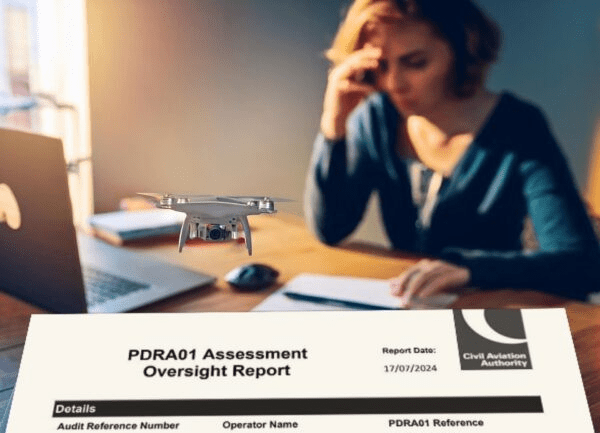In 2024 the CAA changed the process for PDRA applications in the UK (i.e. GVC operators looking to run ‘standard’ operations). The new system is easier at the point of renewal (a quick self-declaration) but brings with it the audit sword of Damocles.
As it turns out, operator audits are coming thick and fast. So, what can you expect and how can you be best prepared?
Fortunately, we’ve already seen some of these audits and can give you a pretty idea of the secrets within.
General Shape of the Report
The audit will take the form of an initial request for documents and then an ‘oversight report’. If you’ve ever made an OSC (Operating Safety Case) application, you’ll be used to the format. The CAA’s queries will be itemised, with reference numbers, and backed up with references to regulation, particularly the AMC (‘Acceptable Means of Compliance). The points will be categorised as follows:
Level 1 – serious safety and regulatory issues
Level 2 – less serious safety and regulatory issues
Observations – relatively minor quibbles
You would hope to receive no Level 1 issues, and then perhaps a handful of Level 2 and Observations.
My suspicion is that the CAA will adopt a series of bêtes noires, much as they used to do with Operations Manual reviews. So here’s the run-down of most likely trip-ups, at least in Autumn 2024
Poor Site Surveys
You will have submitted some planning and risk assessment documents for recent jobs to the CAA. They will be eager to find a good level of detail in them, both administrative (detailing the pilot on site, drone used etc) and also specific details for the site in question. Their antennae will be particularly attuned to anything which looks generic, so be sure to include both pre-site and on-site observations and some decent level of detail of hazards identified.
Pilot Currency
The CAA is very keen to be sure that pilots were current at the time of each and every job detailed. Have you evidenced this with accurate and detailed flight logs?
Operator ID Validity
For some reason, the CAA has an obsession with the possibility of your Operator ID inadvertently expiring during the course of your PDRA (which they could of course avoid by synchronising the two systems). So, even if your ID was and is valid, this may be picked up as an observation, at least.
Privacy
Perhaps wisely, the CAA is responding to the concerns of many members of the public about the potential for invasions of privacy with drones. Unless you have an incredibly comprehensive section on this in your operations manual, this will likely be picked up as an observation.
Reporting
The CAA will check that you have a compliant reporting procedure in your operations manual. Even if you have fully detailed reporting procedures including ECCAIRS, AAIB and AirProx, there will still very likely be an observation in this area and encouragement to revise the current regulations.
Finally….How to Respond
The process really should not be painful as long as you are prepared to do two things:
- Admit your shortcomings
- Make clear commitments to sort them out
My recommendation is to reply in timely fashion to the report with a polite and thorough email. Respond to the audit points in turn, clearly referencing each one by its number, and detail either how you have addressed it already (e.g. by amending your operations manual) or how you will in future (e.g. but adopting a new policy). Include your revised operations manual and, if site assessments have been found wanting, an example of a new and improved version of one of the previous document previously submitted.
Above all, there is no mileage in protesting the legislation or the CAA’s interpretation of it. This is not the time for petty battles or martyrdom. Take it on the chin, and move on.
If you would like assistance responding to an audit then Leaping Wing can help with an advisory service.

